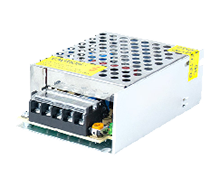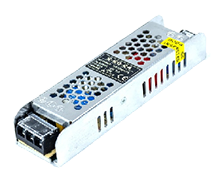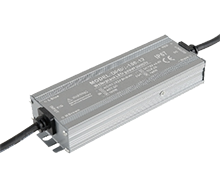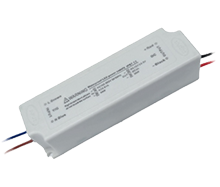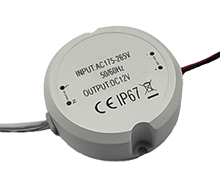Jiangmen LED Switching Power Supply: Protection Methods for LED Driver Power Circuit
Using a fuse (tube) to protect the LED circuit
Because fuses are disposable and have slow response times, poor effectiveness, and are difficult to use, fuses are not suitable for LED light products, as LED lights are mainly used in urban glory projects and lighting projects. It requires circuit protection and is very demanding on LEDs: if the current exceeds normal, the protection can be immediately activated, and the LED power channel can be disconnected to protect the power supply of the LED. The normal and automatic restoration of power after the lamp does not affect the operation of the LED. The circuit cannot be too complex, the volume cannot be too large, and the cost will be very low. Therefore, it is very difficult to use fuses.
2. Use transient voltage suppression diode (TV)
Transient voltage suppression diode is a high-performance protective device in the form of a diode. When the two poles are subjected to reverse transient impact, within a short period of 10 to minus 12 seconds, the resistance between high resistors immediately decreases to low resistivity, resulting in a surge of up to several kilowatts of power. The voltage clamp between the two electrodes is at a predetermined voltage value, protecting the precision components of the electronic circuit. Transient voltage suppression diodes have advantages such as fast response time, excessive power transients, low leakage current, good consistency of breakdown voltage deviation, easy control of clamping voltage, and small size.
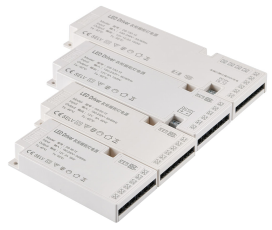
However, in practical applications, it is not easy to find television devices that meet the voltage requirements. The damage to LED beads is mainly caused by internal overheating at present. Television can only detect overvoltage and cannot detect overcurrent. It is difficult to choose an appropriate voltage protection point, as this type of equipment cannot be used in practical applications.
3. Choose self recovering fuses
Self recovery fuse, also known as polymer positive temperature thermistor PTC, is composed of polymer and conductive particles. After processing, the conductive particles form chains in the polymer conductive pathway. When (or the component is at normal ambient temperature), the PTC self recovery fuse is in a low resistance state through normal operating current; When there is an abnormal current passing through the circuit (or an increase in ambient temperature), the large current (or the heat generated by the increase in ambient temperature) rapidly expands by the polymer, cutting off the conductive path composed of conductive particles, and the self-healing fuse is in a high impedance state. When the overcurrent (high temperature) in the circuit disappears, the polymer's cooling LED driver power supply www.leadwayled.com recovers its volume to normal, and the conductive particles form a conductive path. The PTC self-healing fuse has a preliminary low impedance state. The heat generated by the self recovering fuse tube in normal working conditions is very small, and in abnormal conditions, its high heat resistance limits the current passing through it for protection. In specific circuits, you can choose:
Parallel protection. Generally, LED lights are divided into multiple branches connected in series. We can protect the PTC components added in front of each branch. The advantages of this method are high accuracy and good reliability.
General protection. Protect the entire light by adding PTC elements in front of all light beads. The advantage of this method is simplicity, rather than taking up space. For civilian products, the results of this protection are still satisfactory in practical use.
Article source: Jiangmen LED Switching Power Supply http://www.gdsaiya.com
-
01-08
The lighting exhibition has successfully concluded, with abundant harvest!
Dubai International Smart Lighting ExhibitionJanuary 14-16, 2025
-
01-08
Notice of Spring Festival holiday in 2025
Dear customer:Please be informed that our company's Spring Festival holiday is scheduled from January 18, 2025 to February 12, 2025, during which business will be temporarily suspendedStarting fr
-
10-28
Jiangmen LED Switching Power Supply: Protection Methods for LED Driver Power Circuit
Using a fuse (tube) to protect the LED circuitBecause fuses are disposable and have slow response times, poor effectiveness, and are difficult to use, fuses are not suitable for LED light products, as
-
10-21
Advantages and Characteristics of Jiangmen Waterproof Power Supply Manufacturer's Products
LED waterproof power products are designed with integrated components, featuring low temperature rise, low heat generation, power output voltage limit and constant current. High quality device coopera

